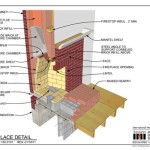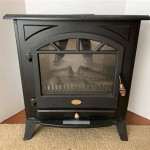Baby Proof Fireplace Gate: Ensuring Safety Around the Hearth
Fireplaces, while offering warmth and aesthetic appeal, present a significant safety hazard for young children. Their inherent design incorporates heat, open flames, and often hard, sharp edges, all of which pose potential risks. A fireplace barrier, specifically a baby-proof fireplace gate, is a critical component of creating a safe environment for infants and toddlers who are exploring their surroundings.
The purpose of a baby-proof fireplace gate extends beyond simply keeping a child away from the fire. It also protects them from burns resulting from a hot fireplace surface, accidental contact with sharp edges of the hearth, and the potential dislodging of decorative elements. A well-chosen and properly installed gate provides a physical barrier that prevents access to these dangers, allowing parents and caregivers to have peace of mind.
The market for baby-proof fireplace gates offers a variety of options, each with its own set of features, materials, and installation methods. Understanding the different types available, along with their respective strengths and weaknesses, is crucial for selecting the most appropriate gate for your specific fireplace and child's needs. Factors such as the fireplace's dimensions, the child's age and developmental stage, and the desired level of security all play a role in the decision-making process.
This article will explore the essential aspects of baby-proof fireplace gates, covering key factors to consider when choosing a gate, different types of gates available, installation guidelines, and best practices for maintaining their effectiveness. By understanding these elements, parents and caregivers can make informed decisions to create a safer home environment for their children.
Understanding the Key Factors for Selecting a Baby Proof Fireplace Gate
Choosing the right baby-proof fireplace gate is not a one-size-fits-all endeavor. Several critical factors must be considered to ensure the gate effectively addresses potential safety risks and integrates seamlessly into your home.
Fireplace Dimensions and Shape: The first step in selecting a gate is to accurately measure the opening of the fireplace. This includes the width and height of the area you need to cover. Fireplaces come in various shapes – rectangular, square, arched, and even irregularly shaped. For standard rectangular fireplaces, a straight gate may suffice. However, for wider or irregularly shaped fireplaces, a multi-panel gate or a custom-built solution may be necessary. Ensure the gate's height is sufficient to prevent the child from climbing over it, typically at least 24 inches.
Material and Construction: The material of the gate plays a role in its durability, heat resistance, and aesthetic appeal. Common materials include metal, wood, and plastic. Metal gates, often made of steel or aluminum, are known for their strength and heat resistance. Wood gates can offer a more aesthetically pleasing look, but must be treated to be fire-resistant and durable. Plastic gates are generally less expensive, but may not be as durable or heat resistant as metal or wood options. Regardless of the material, ensure the gate is constructed with sturdy components and features a secure locking mechanism.
Mounting Method: Fireplace gates can be either hardware-mounted or pressure-mounted. Hardware-mounted gates are screwed directly into the wall or fireplace surround, providing the most secure and stable installation. They are ideal for high-traffic areas or situations where a pressure-mounted gate might be easily dislodged. Pressure-mounted gates, on the other hand, use tension to stay in place and do not require drilling, making them a good option for temporary use or when drilling into the walls is not desired. However, pressure-mounted gates are generally less secure than hardware-mounted gates and should be carefully inspected regularly to ensure they remain firmly in place. For fireplaces, hardware-mounted gates are generally recommended due to the increased security and stability they offer around a potential heat source and hard surfaces.
Safety Standards and Certifications: Look for gates that meet or exceed relevant safety standards, such as those set by the American Society for Testing and Materials (ASTM). These standards ensure the gate has been tested for strength, stability, and other safety features. Checking for certifications provides assurance that the gate has undergone rigorous testing and meets established safety requirements. Always research the manufacturer and read reviews to ascertain the reliability and safety of the product.
Exploring Different Types of Baby Proof Fireplace Gates
Understanding the various types of baby-proof fireplace gates available is crucial for selecting the most appropriate option for your specific needs and fireplace design. Each type offers unique features and benefits, catering to different situations and preferences.
Straight Fireplace Gates: These are the simplest type of fireplace gate, typically consisting of a single panel or multiple panels that can be connected to create a straight barrier. Straight gates are best suited for fireplaces with a simple rectangular or square opening. They are relatively easy to install and often the most affordable option. These gates are usually hardware-mounted for safety.
Multi-Panel Fireplace Gates: Multi-panel gates consist of several interconnected panels that can be configured to fit a wide range of fireplace shapes and sizes. These gates are highly versatile and can be used for irregularly shaped or wider fireplaces. They can often be adjusted to create a customized barrier that perfectly fits the space. The panels can be arranged to form different angles and configurations, allowing for greater flexibility in placement. Multi-panel gates are also often hardware-mounted for optimal security.
Freestanding Fireplace Screens: While not technically a gate, a freestanding fireplace screen can provide a degree of protection. These screens are placed in front of the fireplace and do not require any mounting. They are typically made of metal mesh or glass and can prevent sparks from escaping the fireplace. However, freestanding screens are not as secure as gates and may be easily moved or pushed over by a determined child. They are not recommended as a primary form of baby proofing, but can be used as a supplementary measure in conjunction with a gate.
Retractable Fireplace Gates: These gates feature a mesh or fabric panel that retracts into a housing when not in use. Retractable gates are a good option for maintaining visibility and minimizing obstruction when the fireplace is not in use. They can be particularly useful in smaller spaces where a traditional gate might feel bulky. However, the retraction mechanism should be durable and reliable, and the mesh material should be strong enough to withstand a child's weight. These gates can be hardware or pressure mounted, although hardware mounting is preferred for fireplaces.
Custom-Built Fireplace Gates: For fireplaces with unique shapes or sizes, a custom-built gate may be the best solution. Custom gates can be designed to perfectly fit the specific dimensions of the fireplace and can be made from a variety of materials to match the home's décor. While custom gates can be more expensive than pre-made options, they offer the greatest flexibility and can provide the most secure and aesthetically pleasing solution. Professional installation is generally recommended for custom-built gates to ensure proper fit and function.
Effective Installation and Maintenance of Baby Proof Fireplace Gates
Proper installation and regular maintenance are critical to ensuring the continued effectiveness of a baby-proof fireplace gate. Even the best gate will fail to provide adequate protection if it is not installed correctly or maintained properly.
Following Manufacturer's Instructions: Always carefully read and follow the manufacturer's instructions for installation. These instructions provide specific guidance on how to properly assemble and mount the gate. Deviation from the instructions can compromise the gate's stability and safety. Ensure all necessary hardware is included and use the correct tools for the job. If unsure about any step, consult a professional installer.
Proper Mounting Procedures: For hardware-mounted gates, ensure the screws are securely anchored into the wall studs or fireplace surround. Use appropriate anchors if needed to provide additional support. For pressure-mounted gates, ensure the tension is properly adjusted to create a firm and stable barrier. Regularly check the tension to ensure the gate remains securely in place. Avoid placing pressure-mounted gates on slippery surfaces or in areas where they could be easily bumped or dislodged.
Regular Inspections and Maintenance: Regularly inspect the gate for any signs of damage or wear. Check the hinges, latches, and locking mechanisms to ensure they are functioning properly. Tighten any loose screws or bolts. Replace any damaged or worn parts immediately. Clean the gate regularly to remove dust and debris, which can affect its performance. Depending on the material of the gate, use appropriate cleaning products to avoid damaging the finish or compromising its structural integrity.
Educating Caregivers and Children: It is essential to educate all caregivers, including babysitters and grandparents, on how to properly operate and maintain the fireplace gate. Ensure they understand how to open and close the gate securely and the importance of keeping it locked at all times when the fireplace is in use or accessible to children. While you should never rely on a child understanding the dangers of a fireplace, teaching older children the importance of not tampering with the gate and not climbing on it can also reinforce its effectiveness.
Avoiding Modifications: Never modify the fireplace gate in any way. Altering the gate's design or construction can compromise its safety features and render it ineffective. If modifications are necessary, consult the manufacturer or a qualified professional to ensure the changes do not compromise the gate's integrity.
By carefully considering these factors, selecting the appropriate type of gate, and following proper installation and maintenance procedures, parents and caregivers can create a safer environment for children around the fireplace, reducing the risk of burns and other injuries.

Babyproof Your Hearth And Fireplace With These Simple Tips Tricks

Wood Stove Gas Hearth Gate G3111g4301 G4311 Friendly Fires

How To Baby Proof Fireplace Important Checklist

Fireplace Safety Baby Gates Screens Bumper Guards In Houston Tx Precious Protectors

Child Safety S Kids Home Tips Kidsafe Baby Proof Fireplace Proofing

How To Baby Proof Your Fireplace Reviewed

How To Baby Proof Your Fireplace Pa Guide Proofing Home Safety

Regalo Super Wide Baby Gate And Playard White Babylist

Babyproof Your Hearth And Fireplace With These Simple Tips Tricks

Fireplace Fence Safety Hearth Gate Bbq Metal Fire Pet White Com
Related Posts








